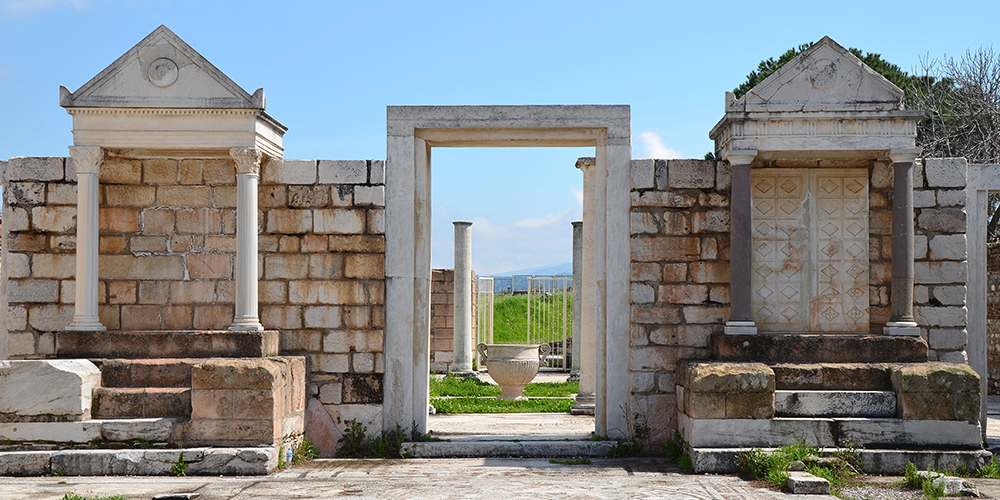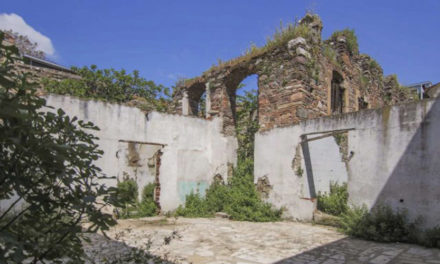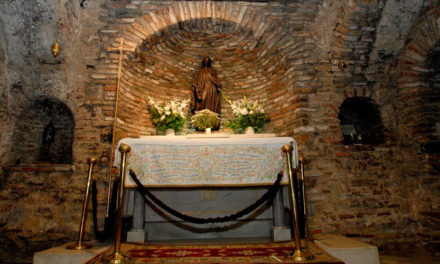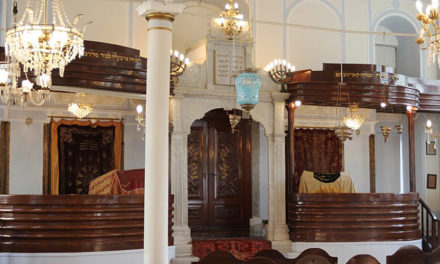The history of the Jews in Turkey covers the 2,400 years that Jews have lived in what is now Turkey. There have been Jewish communities in Asia Minor since at least the 4th century BCE and many Spanish and Portuguese Jews expelled from Spain were welcomed to the Ottoman Empire (including regions part of modern Turkey) in the late 15th century. Despite emigration during the 20th century, modern day Turkey continues to have an active Jewish population..
If you are interested in Jewish History, Traditions, Arts or Biblical History, Turkey is the country where you have to discover at first sight.
HIGHLIGTS
Jews have a long history on this land
New Testament mentions about Jewish populations in Anatolia is widespread: Iconium (now: Konya) is said to have a synagogue in Acts 14:1, and Ephesus is mentioned as having a synagogue in Acts 19:1 and in Paul’s Epistle to the Ephesians. The Epistle to the Galatians is likewise directed at an area of modern Turkey which once held an established Jewish population. Based on physical evidence, there has been a Jewish community in Asia Minor since the 4th century BCE, most notably in the city of Sardis. Even the Garden of Eden is thought by some to have been in Turkey, since this is where the Tigris and Euphrates rise.
Was the Prophet Abraham borned in Asia Minor?
There is a province in southeast Turkey is known as the “city of Prophets”, because the Prophets Job, Abraham and Suayb, whose names are mentioned in the holy books and who lived before the emergence of the three monotheistic religions- Judaism, Christianity and Islam – resided here. According to Muslim tradition, Prophet Abraham was born in a cave on the northern side of Sanli Urfa castle. Today the cave is a pilgrimage site. There is a fish lake in the center of Sanli Urfa filled with sacred fish and surrounded by Halil Rahman Mosque. According to legends, the cruel King Nimrod had Abraham launched from a catapult from the city’s citadel to fall into a pile of burning wood. God intervened and turned the fire into water and the wood into fish, which make up water and fish in the pool.
The Noah’s Ark
According to Jewish scripture, Noah’s Ark had landed on the top of Mount Ararat, a mountain in the Eastern Region of the Republic of Turkey, near the modern borders Armenia and Iran. Flavius Josephus, Jewish historian of the first century, notes Jewish origins for many of the cities in Asia Minor, though much of his sourcing for these passages is traditional.
Sardis Synagogue (3rd Century BCE) is one of the oldest synagogues on the world.
It is located in the province of Manisa Turkey. This former capital city of the antique Kingdom of Lydia in Western Anatolia (Asia Minor), now 10 kilometers west of the modern town of Salihli and some 70 kilometers from Sardis is near the modern village of Sart. The Sardis Synagogue, was actively in use for about 450-500 years long, is the most impressive synagogue in the western diaspora yet discovered from antiquity, yielding over eighty Greek and seven Hebrew inscriptions as well as numerous mosaic floors. The discovery of the Sardis synagogue has reversed previous assumptions about Jewish History in the later Roman empire. Along with the discovery of the godfearers/theosebeis inscription from Aphrodisias, it provides indisputable evidence for the continued vitality of Jewish communities in Asia Minor, their integration into general Roman imperial civic life, their size and importance at a time when many scholars previously assumed that Christianity had eclipsed Judaism.
Etz ha-Hayyim -1324 (Bursa)
The first Jewish synagogue linked to Ottoman rule is Etz ha-Hayyim (Hebrew: עץ החיים) in Bursa which passed to Ottoman authority in 1324. The synagogue is still in use, although the modern Jewish population of Bursa has shrunk to about 140 people.
The Ahrida Synagogue- 1460 (Istanbul)
This is another Romaniot Synagogue from the early ages of Ottoman Jewry (1299-1492), built at 1460. The interior of the Ahrida Synagogue was founded by the Romaniotes of Ohrid, who were resettled to his capital by Sultan Mehmed II, well before the arrival of the Sephardi Jews after 1492.
| IZMIR * Bikur Holim Synagogue * Signora Giveret Synagogue * Etz Hayim Synagogue * Algazi Synagogue * Shalom Synagogue * Beit-Hillel Synagogue * Hevra (Talmud Tora) Synagogue * Los Forasteros Synagogue * Portugal Synagogue * Rosh Ha Har Synagogue * Shaar Ashamaim Synagogue *Ahavat Shalom Synagogue MANISA |
ISTANBUL * Zulfaris Synagogue (Jewish Museum of Turkey)* Ahrida Synagogue c.1460 * Ashkenazi Synagogue * Bakirkoy Synagogue * Bet Avraam Synagogue * Bet Israel Synagogue * Bet Nissim Synagogue * Bet Yaakov Synagogue * Burgazada Synagogue * Caddebostan Synagogue * Etz Ahayim Synagogue Ortakoy * Hemdat Israel Synagogue * Hesed Le Avraam Synagogue * Italian Synagogue * Kal Kados, Corapci Han Synagogue * Karaite Synagogue * Maalem Synagogue * Mayor Synagogue * Neve Shalom Synagogue * Yanbol Synagogue * Yenikoy Synagogue |
ADANA *Adana Synagogue BURSA ÇANAKKALE EDIRNE GAZIANTEP HATAY |
JEWISH HISTORY OF ANATOLIA
The first major event in Jewish history under Turkish rule took place after Sultan Mehmed II’s Conquest of Constantinople. He ordered that Muslims, Christians and Jews from all over his empire be resettled in the new capital. Within months most of the Empires Romaniote Jews, from the Balkans and Anatolia, were concentrated in Constantinople, where they made up 10% of the city’s population. But at the same time the forced resettlement, though not intended as an anti-Jewish measure, was perceived as an “expulsion” by the Jews. Despite this interpretation however, the Romaniotes would be the most influential community in the Empire for a few decades to come, until that position would be lost to a wave of new Jewish arrivals.
The number of native Jews was soon bolstered by small groups of Ashkenazi Jews that immigrated to the Ottoman Empire between 1421-1453. Among these new Ashkenazi immigrants was Rabbi Yitzhak Sarfati, a German-born Jew of French descent (Hebrew: צרפתי – Sarfati, meaning: “French”), who became the Chief Rabbi of Edirne and wrote a letter inviting the European Jewry to settle in the Ottoman Empire, in which he stated that: “Turkey is a land wherein nothing is lacking” and asking: “Is it not better for you to live under Muslims than under Christians?”
Sephardi Settlement (late 15th, early 16th century) Sultan Bayezid II sent Kemal Reis to save the Sephardic Jews of Spain from the Spanish Inquisition in 1492 and granted them permission to settle in the Ottoman Empire. The Sultan issued a formal invitation to Jews expelled from Spain and Portugal and they started arriving in the empire in great numbers.The Sultan is said to have exclaimed thus at the Spanish monarch’s lack of wisdom: “Ye call Ferdinand a wise king he who makes his land poor and ours rich!”. The Jews satisfied various needs in the Ottoman Empire: the Muslim Turks were largely uninterested in business enterprises and accordingly left commercial occupations to members of minority religions. They also distrusted the Christian subjects whose countries had only recently been conquered by the Ottomans and therefore it was natural to prefer Jewish subjects to which this consideration did not apply.
The Spanish Jews were allowed to settle in the wealthier cities of the empire, especially in the European provinces (cities such as: Istanbul, Sarajevo, Salonica, Adrianople and Nicopolis), Western and Northern Anatolia (Bursa, Aydın, Tokat and Amasya), but also in the Mediterranean coastal regions (for example: Jerusalem, Safed, Damascus, Egypt). Izmir was not settled by Spanish Jews until later. The Jewish population at Jerusalem increased from 70 families in 1488 to 1,500 at the beginning of the 16th century. That of Safed increased from 300 to 2,000 families and almost surpassed Jerusalem in importance. Damascus had a Sephardic congregation of 500 families.
Istanbul had a Jewish community of 30,000 individuals with 44 synagogues. Bayezid allowed the Jews to live on the banks of the Golden Horn. Egypt, especially Cairo, received a large number of the exiles, who soon out-numbered the native Jews. Gradually, the chief center of the Sephardic Jews became Salonica, where the Spanish Jews soon outnumbered their co-religionists of other nationalities and, at one time, the original native inhabitants.
The Ottomans at their Apogee (15th century – 17th century)
The status of the Jews in the Ottoman Empire is undeniable that the tolerance they enjoyed was unprecedented. Jews who reached high positions in the Ottoman court and administration include Mehmed II’s minister of Finance (“defterdar”) Hekim Yakup Pasa, his Portuguese physician Moses Hamon, Murad II’s physician Ishak Pasha and Abraham de Castro, the master of the mint in Egypt.
During the Classical Ottoman period (1300–1600)
The Jews, together with most other communities of the empire, enjoyed a certain level of prosperity. Compared with other Ottoman subjects, they were the predominant power in commerce and trade as well in diplomacy and other high offices. In the 16th century especially, the Jews were the most prominent under the millets, the apogee of Jewish influence could arguable be the appointment of Joseph Nasi to Sanjak-bey (governor, a rank usually only bestowed upon Muslims) of the island of Naxos.[21] Also in the first half of the 17th century the Jews were distinct in winning Tax farms, Haim Gerber describes it as: “My impression is that no pressure existed, that it was merely performence that counted.”
But generally speaking, friction between Jews and Turks was uncommon. Some incidents however did take place in the Arab territories: During Murad IV (1623–40) the Jews of Jerusalem were persecuted by an Arab who had purchased the governorship of that city from the governor of the province.[citation needed] In 1660, under Mehmet IV (1649–1687), Safat was destroyed by the Arabs. In 1678, Mehmet IV ordered the banishment of the Jews of Yemen to the Mawza Desert, an event which, despite its brief duration, remains in the collective memory of Yemeni Jews as a great tragedy.
An additional problem was the lack of unity among the Jews themselves. They had come to the Ottoman Empire from many lands, bringing with them their own customs and opinions, to which they clung tenaciously, and had founded separate congregations.
Another tremendous upheaval happened when Sabbatai Zevi proclaimed to be the Messiah. He was eventually caught by the Ottoman authorities and when given the choice between death and conversion, he opted for the latter. His remaining disciples converted to Islam too.
Ottoman Stagnation and Decline (18th century – 20th century)
The history of the Jews in Turkey in the eighteenth and nineteenth century is principally a chronicle of decline in influence and power, they lost their influential positions in trade mainly to the Greeks, who were able to “capitalize on their religio-cultural ties with the West and their trading diaspora”. An exception to this theme is that of Daniel de Fonseca, who was chief court physician and played a certain political role. He is mentioned by Voltaire, who speaks of him as an acquaintance whom he esteemed highly. Fonseca was involved in negotiations with Charles XII of Sweden.
But by 1908, there were five Jewish members of the Ottoman parliament. The minister plenipotentiary from the United States to the Ottoman Empire, Oscar S. Straus, was a Jew. Straus was again minister from 1897 to 1900. In the war of 1885, although not admitted to the army, they gave pecuniary and other aid. In Adrianople 150 wagons were placed by them at the disposal of the government for the transportation of ammunition; and in the war of 1897 the Jews of Istanbul contributed 50,000 piasters to the army fund.Ottoman Jews held a variety of views on the role of Jews in the Ottoman Empire, from loyal Ottomanism to Zionism. Emanuel Karasu of Salonika, for example, was a founding member of the Young Turks, and believed that the Jews of the Empire should be Turks first, and Jews second.
As mentioned before, the overwhelming majority of the Ottoman Jews lived in the European-provinces of the Empire. As the Empire declined however, the Jews of these region found themselves under Christian rule. The Bosnian Jews for example came under Austro-Hungarian rule after the occupation of the region in 1878, the independence of Greece, Bulgaria and Serbia further lowered the number of Jews within the borders of the Ottoman Empire. The greatest loss to the Ottoman Jewry however, would be the loss of Thessaloniki, with its population of over 60.000 Jews after the First Balkan War. The Jewish communities in these new Balkan states were completely annihilated during the Holocaust, whereas the relatively small amount that remained in Turkey were able to survive the horrors of World War II, due to Turkeys neutrality in the conflict.
Turkish Republic
The Jewish population of Ottoman Empire had reached nearly 500,000 at the start of the 20th century. The territories lost between 1829 – 1913 to the new Christian Balkan states, significantly lowered this number. The troubled history of Turkey during the 20th century and the process of transforming the old Ottoman empire into a modern Western nation state after 1923 however, had a negative effect on the size of all remaining minorities, including the Jews.
The planned deportation of Jews from East Thrace and the associated anti-Jewish pogrom in 1934 was one of the events that caused insecurity among the Turkish Jews. The effect of the 1942 Varlık Vergisi (“Wealth Tax”) was the greatest on non-Muslims – who still controlled the largest portion of the young republics wealth – even though in principle it was directed against all wealthy Turkish citizens. The “wealth tax” is still remembered as the “catastrophe” among the non-Muslims of Turkey and it had probably the most detrimental effect on the numbers of the Jewish community. Many people unable to pay the taxes were sent to labor camps and about 30,000 Jews emigrated. The tax was seen as a racist attempt to diminish the economic power of minorities in Turkey.
On the night of 6/7 September 1955, the Istanbul Pogrom was unleashed. Although primarily aimed at the city’s Greek population, the Jewish and Armenian communities of Istanbul were also targeted to a degree. The damage caused was mainly material (a complete total of over than 4,000 shops and 1,000 houses – belonging to Greeks, Armenians and Jews – were destroyed) it deeply shocked minorities throughout the country, and 10,000 Jews subsequently fled Turkey.
During World War II
Turkey remained neutral during World War II (until its symbolic declaration of war on Nazi Germany on 23 February 1945) and officially forbade granting visas to German Jews, individual Turkish diplomats (such as Necdet Kent, Namık Kemal Yolga, Selahattin Ülkümen and Behiç Erkin) did work hard to save Jews from the Holocaust. According to Prof. Stanford J. Shaw “some 15,000 Turkish Jews from France, and even of some 100,000 Jews from Eastern Europe” were saved because of Turkish efforts. On the other hand, Turkey has been implicated in the Struma disaster, due to its refusal to allow the Jewish refugees on board to disembark in Turkish territory.
Current Situation of Jews in Turkey
The present size of the Jewish Community is estimated at around 26,000 according to the Jewish Virtual Library. The vast majority live in Istanbul, with a community of about 2.500 in İzmir and other smaller groups located in Adana, Ankara, Bursa, Çanakkale, Iskenderun and Kirklareli. Sephardic Jews make up approximately 96% of Turkey’s Jewish population, while the rest are primarily Ashkenazi Jews.
Turkish Jews are legally represented by the Chief Rabbi. Rabbi Ishak Haleva, is assisted by a religious Council made up of a Rosh Bet Din and three Hahamim. Thirty-five Lay Counselors look after the secular affairs of the Community and an Executive Committee of fourteen, the president of which must be elected from among the Lay Counselors, runs the daily affairs.
In 2001, the Jewish Museum of Turkey was founded by the Quincentennial Foundation, an organisation established in 1982 consisting of 113 Turkish citizens, both Jews and Muslims, to commemorate the five-hundredth anniversary of the arrival of the Sephardic Jews to the Ottoman Empire.
In 2021, Izmir Jewish Community Foundation has declared the “Izmir Jewish Heritage Project”which is financed by the European Union Commission. >>> Details





